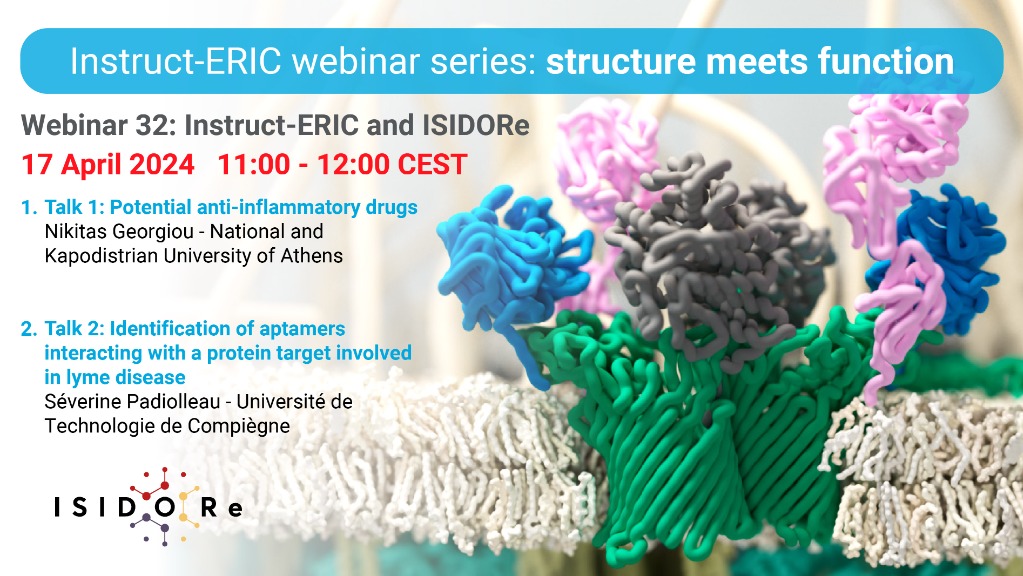 Instruct
InstructThe latest webinar in the Instruct-ERIC Structure Meets Function series includes speakers from the ISIDORe project. The webinar series offers an insight into the very cutting edge of structural biology research, utilising the latest techniques available through Instruct-ERIC facilities and centres.
This month we will have two speakers who have accessed the Instruct-ERIC facilities, expertise, and machinery via the ISIDORe project. ISIDORe provided funding for access to a wide range of structural biology services for infectious disease research, with specific calls on SARS-CoV-2, respiratory pathogens, risk group 4 pathogens, and many others.
The webinar will take place 11:00-12:00 CET, on 17 April.
Talk 1: Nikitas Georgiou - National and Kapodistrian University of Athens
Title: Potential anti-inflammatory drugs
Abstract: The assignment of structure and conformational analysis for chalcone derivatives VK1, VK2 and AD26, and the quinoline derivative ADMAK was conducted utilizing homonuclear and heteronuclear 2D Nuclear Magnetic Resonance (NMR) spectroscopy techniques (2D-COSY, 2D-NOESY, 2D-HSQC, and 2D-HMBC), along with quantum mechanics (QM) calculations employing Functional Density Theory (DFT). Following the identification of compound structures, diverse conformations of both compounds were determined using DFT. The most energetically favorable configurations for the four molecules were found, aligning with spatial correlations observed in the 2D-NOESY spectrum. Subsequently, molecular binding experiments aimed to 5-lipoxygenase, were performed. In silico molecular binding assays revealed favorable binding energy values across all four compounds examined. Specifically, the "LOX-compound" complex, initially identified through docking studies, underwent subsequent evaluation via Molecular Dynamics (MD) simulations to gauge its stability. Saturation Transfer Difference (STD) Nuclear Magnetic Resonance (NMR) unveiled the atomic-level interactions between these compounds and 5-LOX. ADMET calculations utilizing preADMET and pKCSm software suggested that all the molecules hold promise as potential drug leads.
Talk 2: Séverine Padiolleau - Université de Technologie de Compiègne
Title: Lyme Borreliosis Diagnostic : Selection of probes for a direct detection of bacteria
